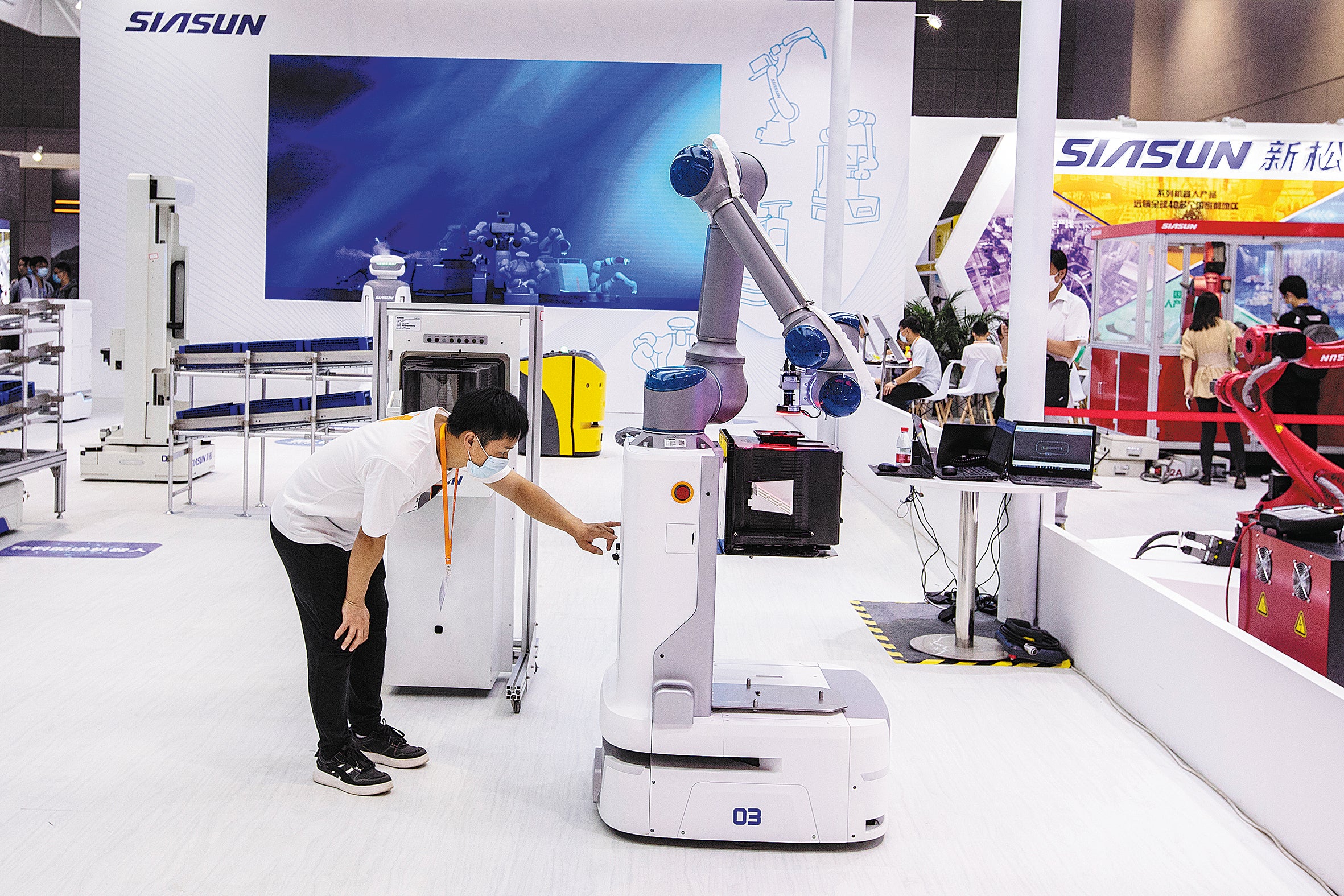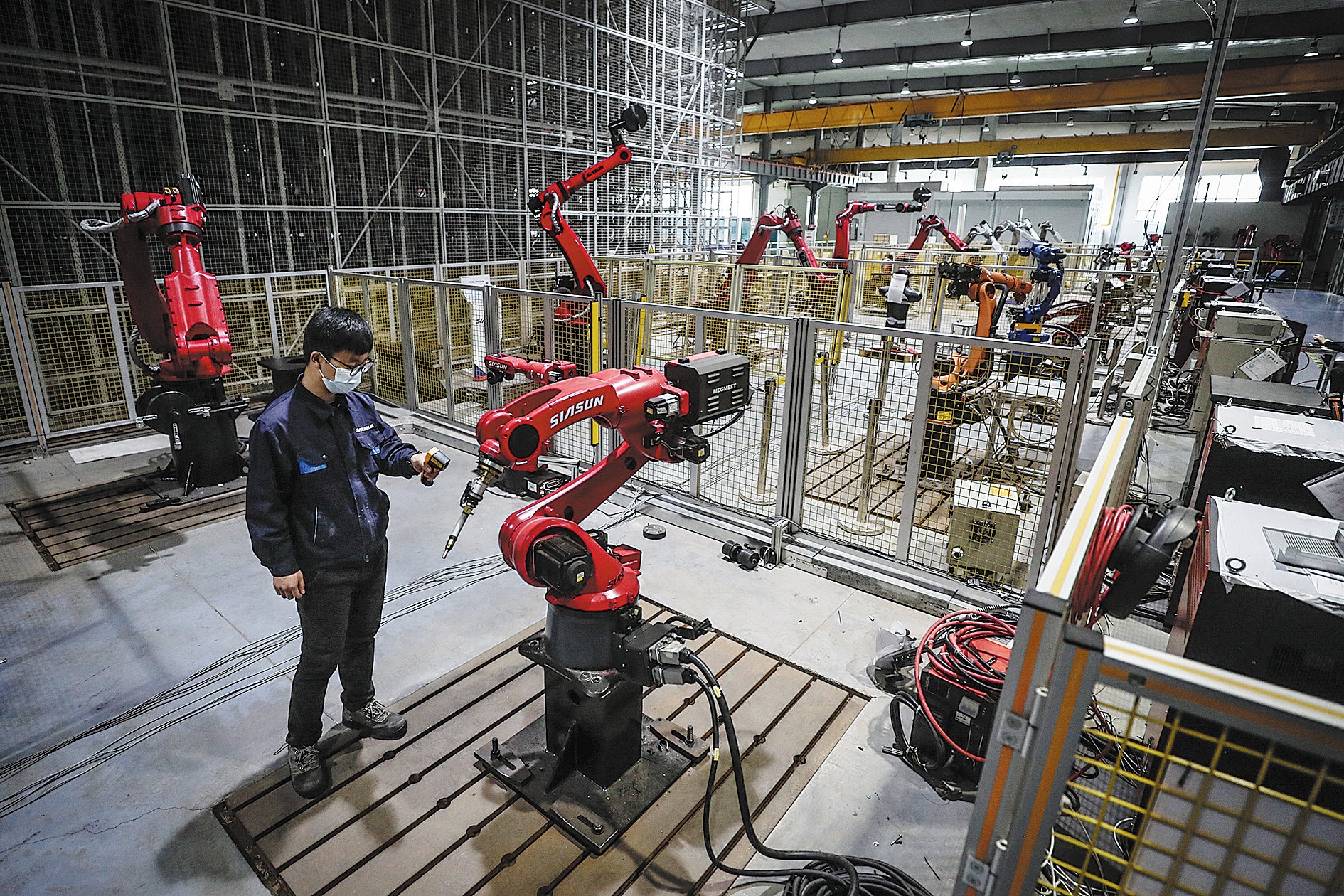Robotics prowess is a sign of strength
THE ARTICLES ON THESE PAGES ARE PRODUCED BY CHINA DAILY, WHICH TAKES SOLE RESPONSIBILITY FOR THE CONTENTS

Robotics technology has grown rapidly in recent years, integrating emerging technologies such as artificial intelligence and 5G. It is also boosting new products and new applications that can promote global economic development and people’s well-being.
The 2022 China Robotics Industry Development Report, published in August by the Chinese Institute of Electronics, estimates that the global robotics market will be worth $51.3 billion (£45.3 billion) this year, with an average annual growth rate of 14 per cent from 2017 to 2022. The value of the global robotics market is forecast to exceed $65 billion (£57.5 billion) by 2024.
“The robotics industry is an important symbol of a country’s technological strength and level of high-end manufacturing,” Jin Zhuanglong, China’s minister of industry and information technology, told the World Robot Conference in Beijing in August, 2022.
Combined with emerging technologies such as AI, 5G and new biological materials, the robotics industry is entering a key period of strategic opportunity for development and upgrading, Jin said.
Robots, an important tool to promote digital transformation and boost the digital economy, are accelerating their integration into production and people’s daily lives, said Wang Hong, deputy director of the first equipment industry department of the Ministry of Industry and Information Technology, adding that the industry has shown great development potential.
China has formed what is basically a whole industry chain ranging from robot parts to robot applications, Wang said.

“In the first half of the year, while the development of the robotics industry slowed due to COVID-19, it has gradually picked up pace.”
China’s industrial robot industry produced a record 366,000 robots in 2021, 67.9 per cent more than in 2020. The output of service robots rose 48.9 per cent to 9.21 million last year.
The institute’s report forecasts that China’s robotics market will continue to boom this year. The market is forecast to be worth $17.4 billion (£15.4 billion) in 2022, growing 22 per cent a year on average.
The production of industrial robots, buoyed by a series of supportive policies and the rapid development of emerging technologies, is growing quickly and has played a key role in boosting the industry’s advancement.
Many Chinese industrial robot companies are enjoying a revival in demand for their products, as customers such as new energy industry players have stepped up their production amid better containment of the pandemic.
The new energy industry is at a breakout point for the growth of robot applications, said Zhang Lei, vice-president of Siasun Robot &Automation Co, one of China’s largest robotics companies.
There has been rising demand in China for industrial and mobile robots from new energy’s rapid development, and Siasun has been taking part in the process, Zhang said.
“Our mobile robots have been widely used in manufacturing plants of major new energy companies.”
Milton Guerry, former president of the International Federation of Robotics, said: “China is by far the biggest robot market in the world in terms of annual sales and operational stock.” The federation is a professional, non-profit organisation based in Germany.
The federation’s figures on robot density, based on the number of industrial robots per 10,000 employees, are a useful indicator of China’s dynamic development, Guerry said.
China’s robot density in the manufacturing industry ranks ninth globally with 246 industrial robots per 10,000 employees, whereas five years ago it was 25th globally with 49 robots per 10,000 employees, the federation says.
Chen Yu, a partner with the Chinese venture capital firm Yunqi Partners, said he has seen high demand for robots in labour-intensive industries and industries that potentially put employees at high risk.
“Few people like to work in those industries. Also, robots have big advantages over people in terms of standardisation, safety and intelligence.”
In addition, AI provides efficient digital technology useful to all industries as the digital economy becomes more important. The sensors of intelligent robots can examine the environment and collect data, process the information and make decisions through logical analysis and understanding, and then react to situations and complete tasks, Chen said.
He Jingwei contributed to this story
